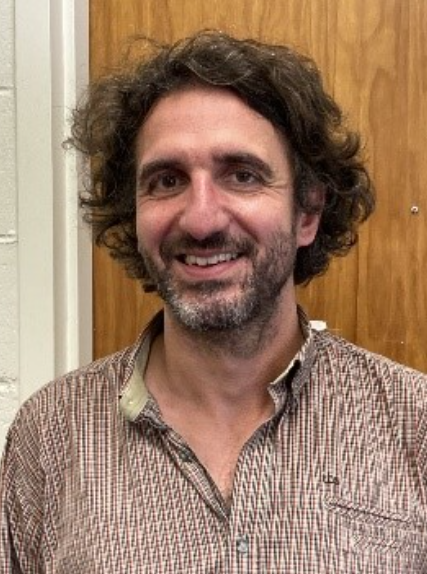Interview with Frédéric Holweck
Dr. Frédéric Holweck
Visiting Professor
Department of Math and Statistics
Dr. Frédéric Holweck is a Visiting Professor in the Department of Mathematics and Statistics from the University of Technology of Belfort- Montbéliard in France.
Q1: What brought you to Auburn?
I grew up in the south of France and attended a university in Toulouse, the fourth largest city in France. After I started my PhD program at the same university, my advisor moved back to the United States as a Professor at Georgia Tech where I became a visiting graduate student. In 2004, I received my PhD in Algebraic Geometry. I worked for a while as math teacher and lecturer, then began my university career as an Assistant Professor, then promoted to Associate Professor, at the University of Technology of Belfort-Montbéliard in France.
In 2018 I invited Dr. Luke Oeding (we shared the same PhD advisor although we never met) from Auburn University to start a research collaboration focused on quantum information, a combination of quantum physics and computer science. This continued collaboration is what brought me to Auburn.
Q2. How did you become interested in math?
People usually have a story about how a teacher inspired them or took notice of their interests, and that is what happened to me. In high school I was lucky to have a math teacher who had a PhD in algebra. He noticed that I was interested in solving problems and basically provided me extra geometric questions to train me. I actually still remember some of them.
Q3: What is your favorite Mathematical Theorem (and why)?
There are many Mathematical Theorems that I find very interesting and elegant and so it is difficult to choose one. As an undergraduate I enjoyed the Fundamental Theorem of Algebra which states that every non-constant complex polynomial has a root. I admired that the proof of this algebraic property was based on a topological concept such as continuity. The problem was solved in the 18th century and it was an important question for the algebraists at that time. But the answer came from another branch of mathematics and I like the idea that the answer came from a different perspective on the problem.
I also like the work of Alan Turing, particularly his 1935 paper where he also made a change of perspective to tackle the question of what is a computable from the perspective of what can be done with a (Turing) machine.
Q4: Which of your research results are you most proud?
I enjoy making connections between different branches of sciences. Over the past ten years I have been working to apply ideas from algebraic geometry to quantum information. Some really old ideas from geometers of the 19th century are actually efficient in describing properties of the 21st century science (quantum information). Discovering these connections is a part of my work that interests me. Dr. Oeding and I are working through the next steps to use a quantum device to compute some algebraic invariants such as the hyperdeterminant and the hyperpfaffian. It is fascinating to work with an abstract concept and turn it to something you can compute, especially when, in cases like ours, these computations will inform developments in applied sciences such as quantum information.
Q5: What is the best part of an academic career?
We are very lucky as mathematicians to enjoy much freedom in our work. We basically only need some paper, a blackboard, and other mathematicians to talk with. We are also fortunate to work with young graduate students that we hope will be as passionate as we were at their age. Having the freedom to research and collaborate with colleagues and students make this job especially enjoyable.
Q6: What do you like most about Auburn University?
I like the campus and its trees as well as the exciting atmosphere when it is game day. Attending sports events here is different than in Europe. It is more than just playing the game here. It also includes the entertainment surrounding and leading up to the event.
Q: What do you do for fun or what is one thing that most people might not know about you?
When I am not working on math, I play a very old stringed instrument called the hurdy gurdy that I brought with me to the US. Since coming to Auburn I play music with some Irish musicians I met in Opelika.
Note: The hurdy-gurdy is a mechanical string instrument that produces sound by a hand-crank-turned, rosined wheel rubbing against the strings.
Latest Headlines
-
02/12/2025
-
02/11/2025
-
02/10/2025
-
01/30/2025
-
12/03/2024

